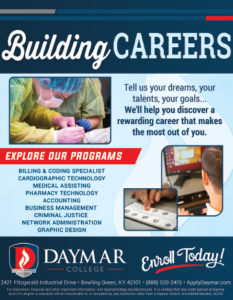
by Shannon Gottke
Here we are again, on the cusp of a new year. It is a popular time to take stock and consider changes both big and small. If one of the changes you are considering is going to or going back to college, there are ways to lighten the financial burden of that endeavor. Help is available from many different sources, and the first step in finding it is to seek it. Here is some helpful information to get you started.
What is financial aid?
Financial aid is money that can help you pay for college. Some aid needs to be paid back or earned and some aid is a gift. This money is available to all people of all ages and descriptions. Here are seven important things you should know about financial aid.
Financial aid can help you go to or go back to college
Getting financial aid can make it possible for you to go to college. Or it might enable you to attend a college you thought you couldn’t afford.
A total of $183.8 billion in aid was available in 2014-15 undergraduate aid
There are four main sources: Federal government (the largest source), state governments, colleges, universities and private organizations.
You have to apply to qualify for aid
One thing is for sure: If you don’t fill out financial aid forms, you won’t get any aid. Even if you think you may not qualify, you should still submit the forms.
The FAFSA is the place to start — and it’s free*
To qualify for many types of aid, you will need to complete the Free Application for Federal Student Aid (FAFSA). This application gives you access to these types of aid…
Grants and scholarships – money you do not have to pay back
Work-study jobs – paid, part-time work that’s generally on campus
Loans – money you need to pay back, usually after you graduate
*There are places that charge a fee to help you complete the FAFSA, but it can be done free at www.fafsa.gov. If an organization tries to charge you, it’s not legitimate.
The FAFSA – this is important – is not only for federal aid
The FAFSA qualifies you for federal aid, but many state governments and colleges also use this application to award their own aid.
Completing the FAFSA is convenient
Complete the form online at www.fafsa.gov or download paper forms there. There is even a tool to import your family’s tax information directly from the IRS website making it unnecessary to collect all that information before you start.
More aid is out there
Once you have completed the FAFSA, you should apply for these types of aid…
Financial aid at the colleges to which you are applying
Private scholarships for which you are eligible
There are an overwhelming number of scholarships available – for everything from money awarded for helping a friend register to vote to cultural diversity scholarships. Applications are free and easy to find online, so if you’re considering a college education, please do yourself and your bank account a favor and check them out.
For more than 50 years, Daymar has been serving communities and providing skilled education to its students. Daymar operates campuses in Kentucky, Tennessee and Ohio, along with its online course programming. Daymar is accredited by the Accrediting Council for Independent Colleges and Schools, and offers programs in business, health care, health and wellness, criminal justice, and technology and design. For placement, financial and other important information, visit our website at http://.
Information from https:bigfuture.collegeboard.org




